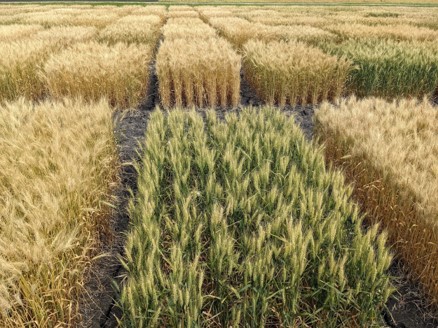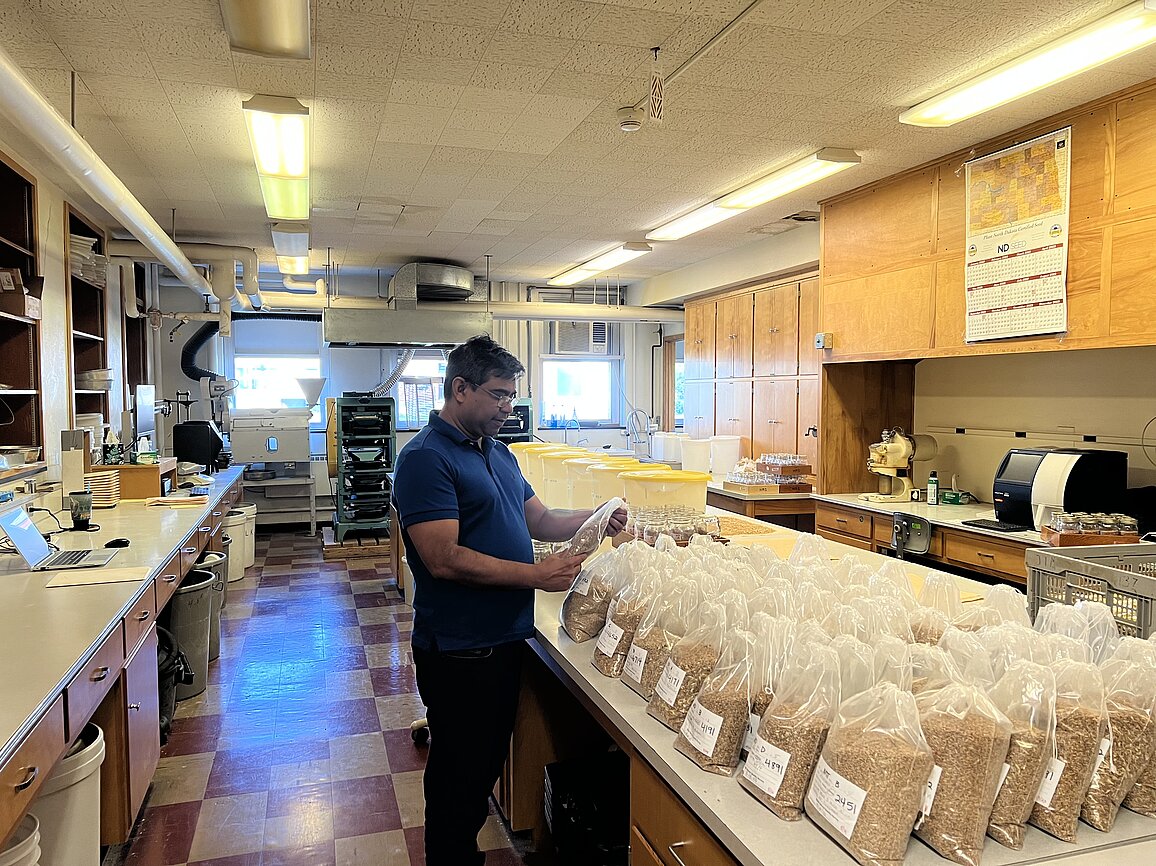NDSU Hard Spring Wheat Variety Development Program

Arabinoxylans of HRS Wheat and Their Impact on Water Absorption Capacity and Health Benefits
The water absorption capacity (WAC) in wheat is a crucial commercial factor that significantly impacts the quality of the end product. Arabinoxylans (AX), a non-starch polysaccharide found in wheat endosperm, is recognized as one of the primary elements influencing WAC. The interaction between AX and WAC of wheat is complicated and involves multiple dimensions. There has been substantial progression over the years to understand this complex relationship, with studies encompassing molecular, genetic, environmental, and processing perspectives. However, the relationship between AX and WAC in Hard Red Spring (HRS) Wheat cultivated in North Dakota has not been significantly explored. The increasing demand for high WAC wheat classes in global trade is exerting pressure to breed HRS Wheat with enhanced WAC.
Furthermore, AX belongs to the class of dietary fibers called hemicelluloses, which has attracted considerable interest because of their potential health advantages, such as enhancing gut health, acting as prebiotics, promoting beneficial bacterial growth, ensuring bowel regularity, managing blood sugar levels, reducing cholesterol, bolstering the immune system, and exhibiting antioxidant properties. Consequently, the AX content and quality in different wheat varieties are gaining prominence in the baking industry, especially given the rising consumer demand for healthier food options.
In light of this, the present project seeks to investigate the characteristics of AX in HRS wheat to gain a comprehensive insight into their association with WAC and health-promoting factors. This endeavor is vital in planning a breeding strategy that enhances these properties to align with market needs.
Quality analysis of stone-milled refined flour
Historically wheat grains were grounded by stone milling to produce whole wheat flour which was the main ingredient in domestic and commercial baking. However, invention of roller milling technology to produce refined flour by removing grain’s bran and germ is a historical milestone in cereal based food industry. That enabled large scale commercial production of refined flour to produce light colored and fine textured end-products. However, that reduced the amount of dietary fiber and many other health components present in the wheat bran and germ. While whole wheat flours (WEFs) offer a wealth of health benefits, they come with certain drawbacks in sensory properties. If we are able to incorporate some of the bran and germ particle in refined flour then we can be able to meet both the nutritional increment as well as upliftment in sensory evaluations of baked product. From that perspective the idea of producing refined flour by stone milling have be revolved which will have higher amount fiber than refined flour but lesser then the regular WWF.
Impact of nitrogen variations on the biochemical properties and functionality of wheat
Research on nitrogen levels in wheat is mainly aimed at increasing yields for profit, often overlooking how it affects wheat quality. Specifically, little is known about how nitrogen affects the proteins, starch, and fiber in Hard Red Spring (HRS) wheat, and its impact on flour and dough quality. Understanding these effects is crucial for maintaining the high quality of HRS wheat. This study examines how nitrogen levels change the biochemical and functional qualities of HRS wheat. This will help us understand the impact of nitrogen on the quality of HRS wheat, focusing on its biochemical and functional characteristics.
Sourdough bread quality investigations
The sourdough (SD) market has grown worldwide, becoming a key player in the baking industry. The quality of SD bread depends on factors like flour type, particle size, and fermentation time, with protein and starch variations significantly affecting texture and flavor. Despite its importance, research on these aspects is limited. This study will investigate how wheat classes and processing approach influence bread quality. Aimed at improving SD bread formulation, this research will benefit the baking and milling industries by enhancing SD bread quality through optimized ingredients and processes.



